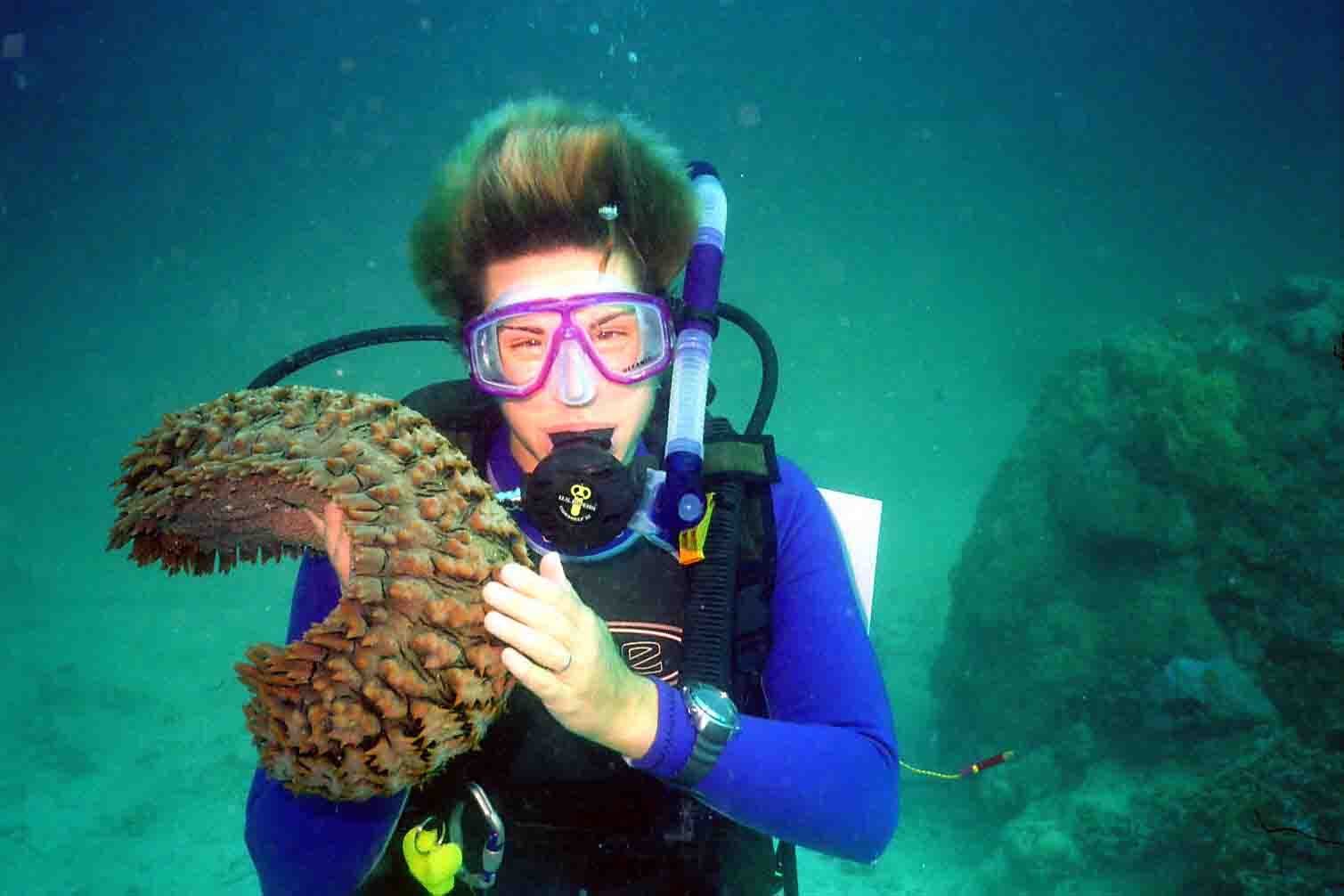
February 20 - Australia: Great Barrier Reef, Queensland
We all woke up at 4:00AM when the boat stopped and dropped anchor somewhere off the reef. And when I say we dropped anchor, I don't mean that it was tossed in the water. Nope. It was powered by a clank-clank-clank engine that pulled the anchor chain out of whatever metal container it was in and slowly lowered it from the bow into the ocean. In other words, it was LOUD!!!! We figured out what the ruckus was, but couldn't believe that it took all of three minutes for the anchoring process to finish up. Yikes!
At 6:30, Jon's alarm went off and we woke up to the sounds of Nao patrolling the cabins saying, "Wakey! Wakey! Dive Time!!". These would become the mantra for the rest of the trip. So we wakied-wakied and dragged ourselves upstairs for our 7:00AM breakfast and Nao's spunky dive briefing.
My cold was pretty much spot on and raring to go. So I took an Allegra (which we purchased in Kathmandu sans prescription) and hoped for the best. Although Steve offered me Sudafed, I didn't want to take decongestants because of the risk of a reverse squeeze underwater. I'll just tough it out and do only four dives today instead of five.
Dive #1: Century Bay (Between Ribbon Reefs #2 & 3)
Depth: 21 meters
Bottom Time: 70 minutes (8:07AM - 9:17AM)
Visibility: 12 meters
This was our first dive with a camera, and we were excited to use it. We finished up a roll of film on this dive alone. I think the pictures tell the story best, so here they are:

Heidi and a Pineapple Sea Cucumber (no comments about the hair, please)
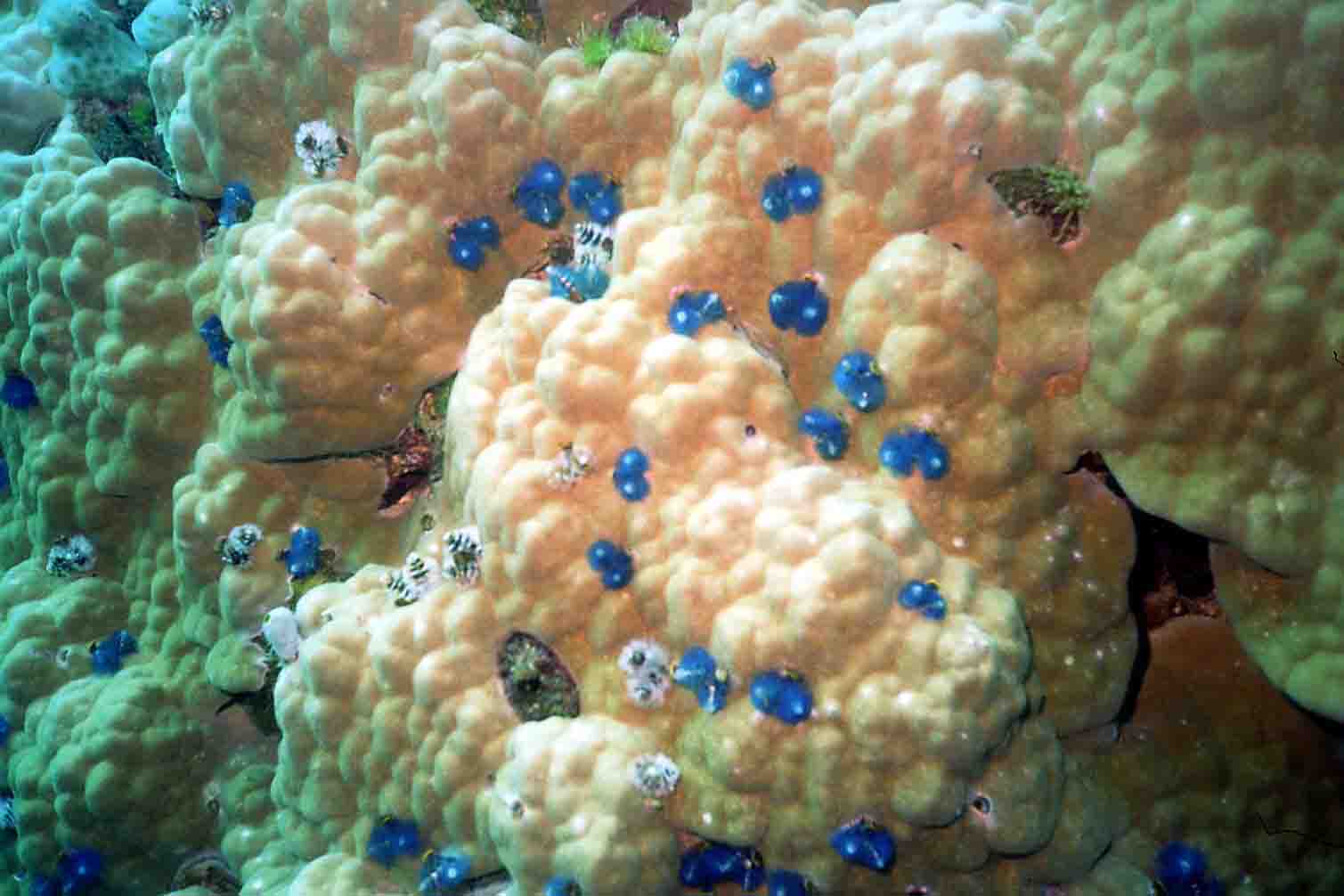
Christmas Tree Worms on Lunar Coral
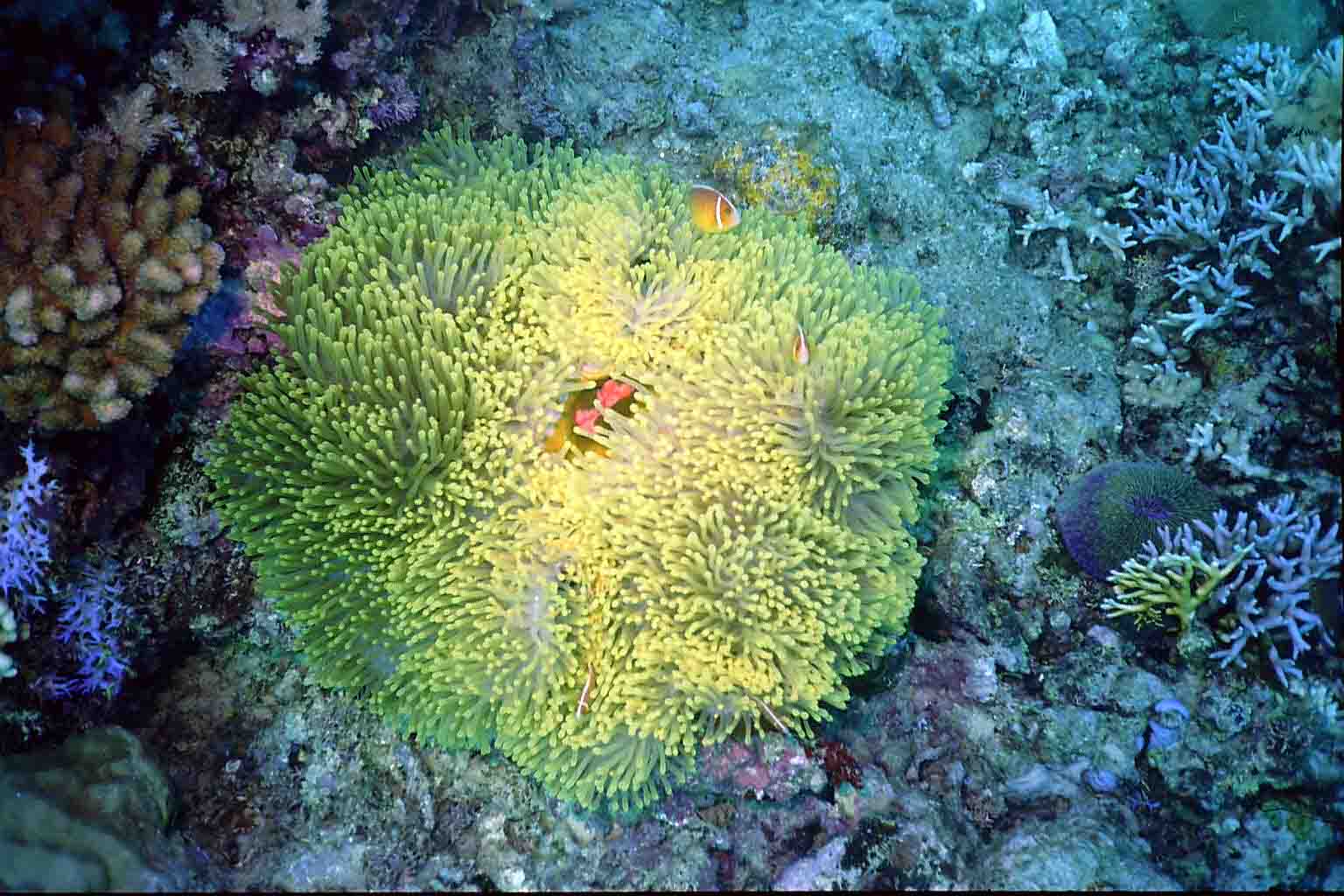
Anemone Fish
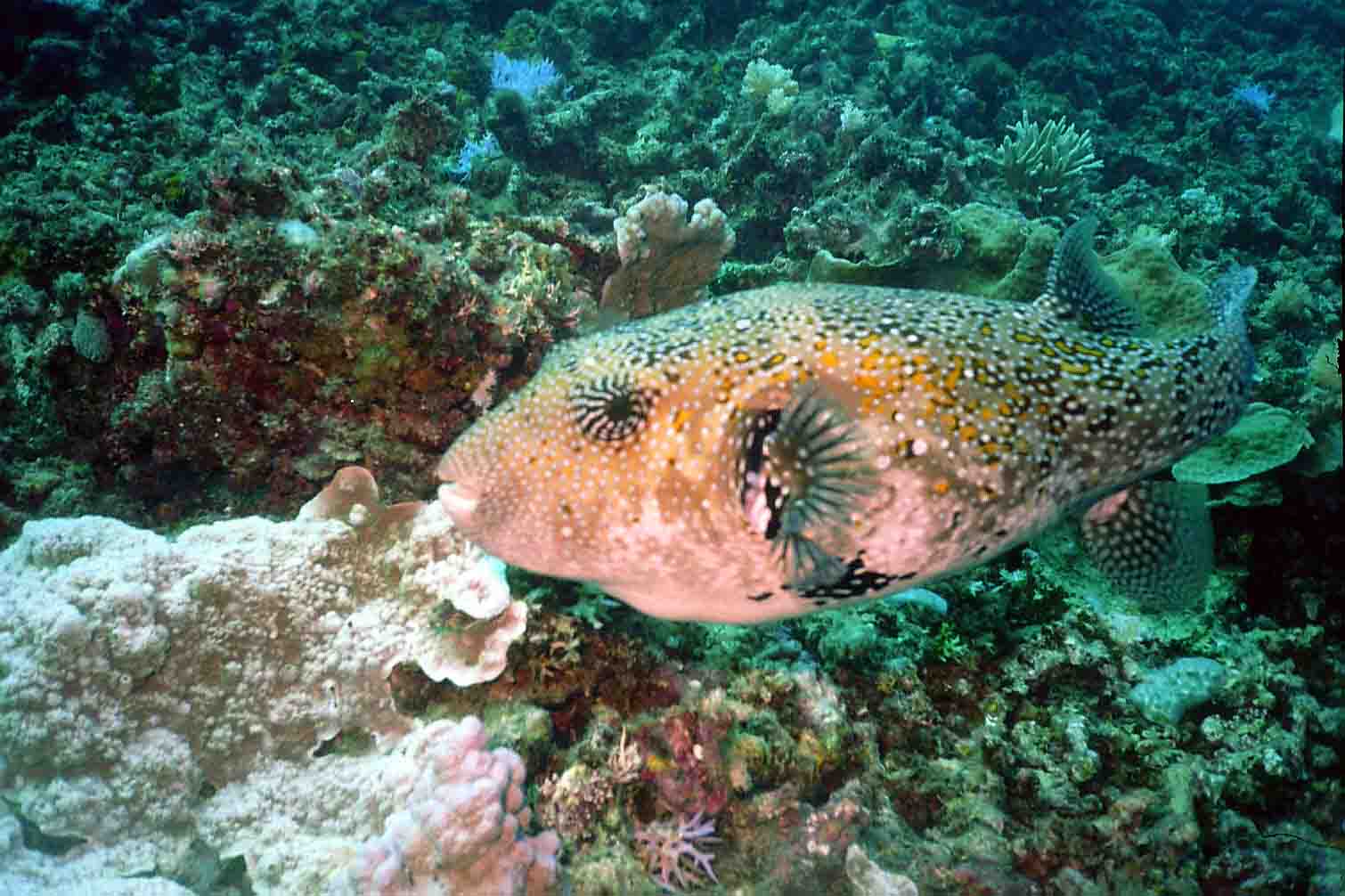
A Puffer Fish
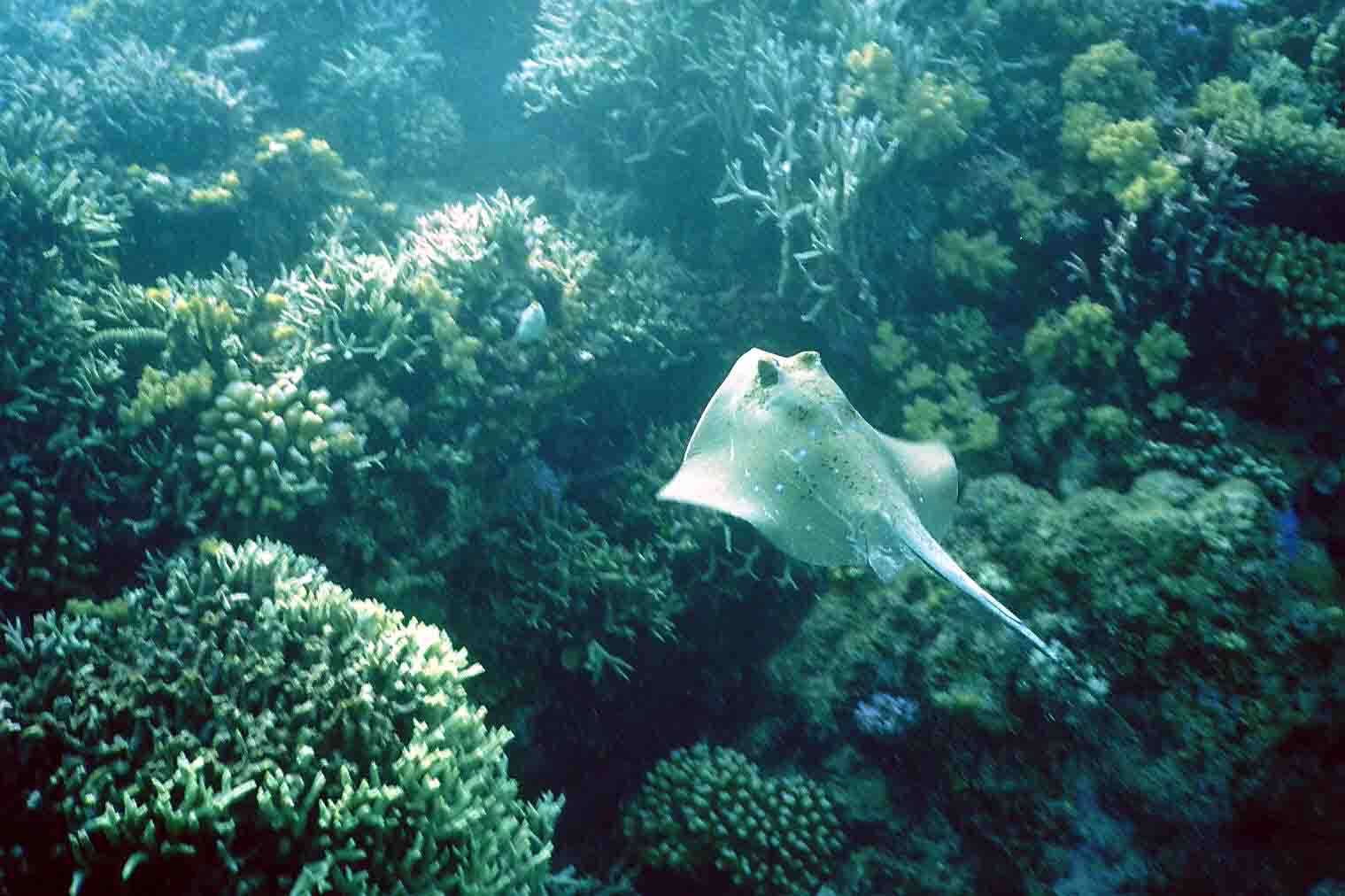
A Blue Spotted Lagoon Ray
Dive #2: Temple of Doom (Between Ribbon Reefs #2 & 3)
Depth: 19.5 meters
Bottom Time: 70 minutes (10:43AM - 11:53AM)
Visibility: 10 meters
This next dive was a lovely one, which many anemone fish and a medium-sized potato cod. We also ran into a Hawksbilled Turtle.
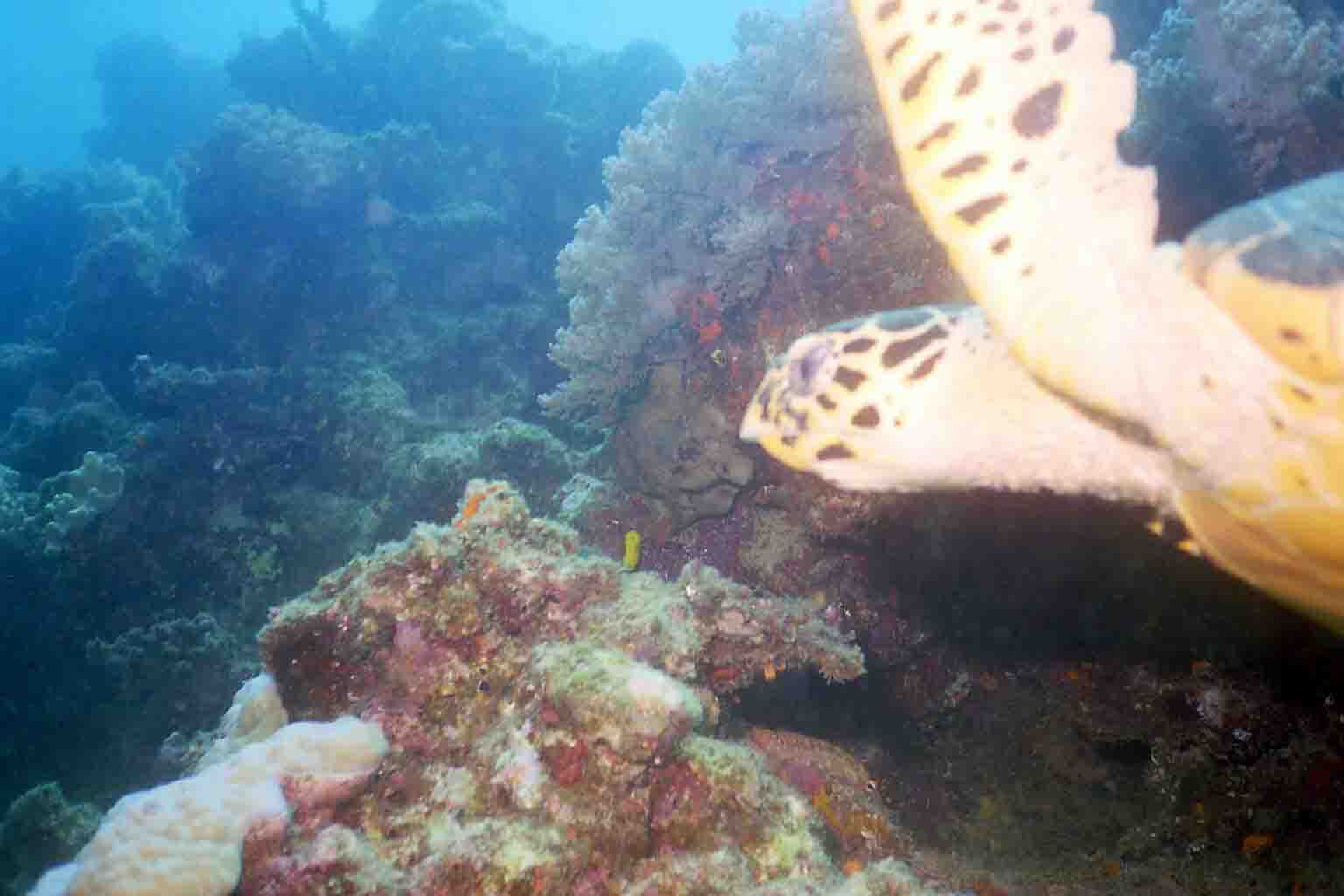
Hawksbilled Turtle - Close-up
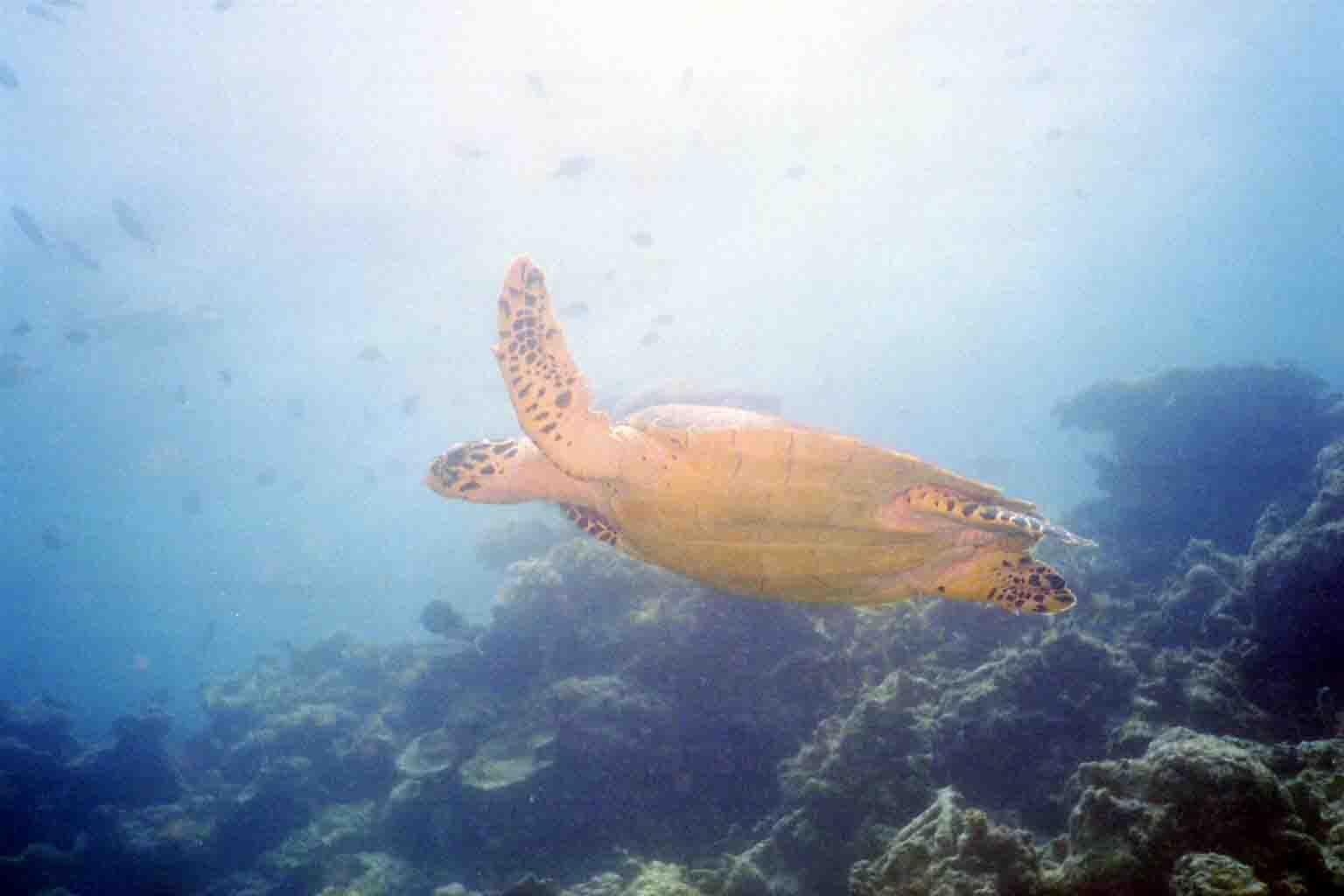
Hawksbilled Turtle swimming
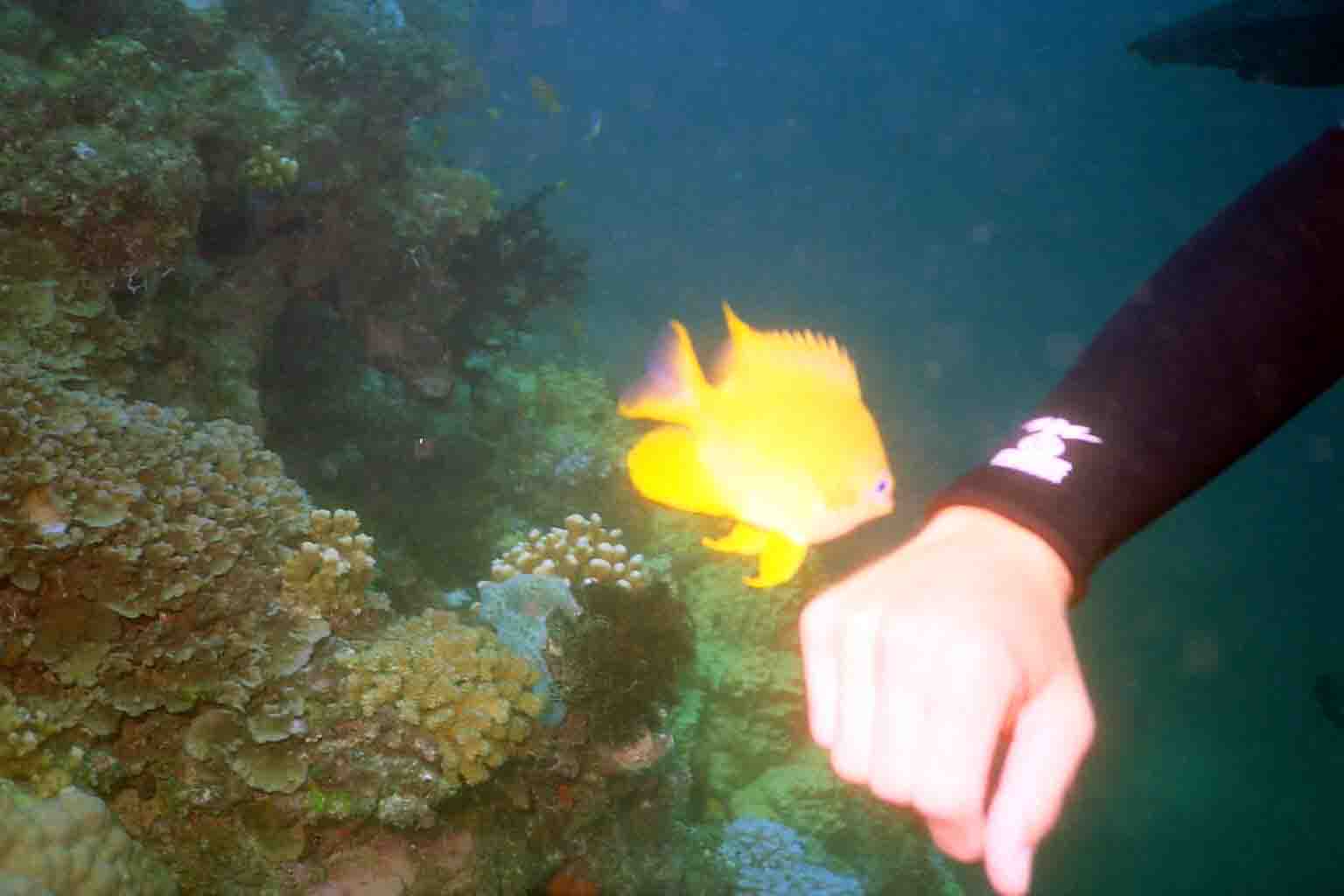
Little Yellow Damsel which nipped at our wrists to get us out of its territory
After the second dive, we settled into some lunch and a surface interval, while Ian drove us to our next dive site. The next two dives would be "open deck". In other words, we could dive as we pleased up until 5:00. Most of the group wanted to do two dives, but I opted for one dive and a nap.
Dive #3: Tak's Reef (Between Ribbon Reefs #2 & 3)
Depth: 20 meters
Bottom Time: 59 minutes (1:30PM - 2:29PM)
Visibility: 10 meters
On Tak's reef, we dove with Dan the Dive Master from Seattle. We swam around the bommie and saw some lovely fan coral. We did take some pictures, but none of them turned out as lovely as we'd imagined. This underwater photography thing is much harder than I thought!
Dive #4: Tak's Reef (Between Ribbon Reefs #2 & 3)
Depth: 15.5 meters
Bottom Time: 55 minutes (3:58PM - 4:53PM)
Visibility: 10 meters
For this dive, I curled up in bed and tried to sleep off my cold. Jon and Dan went down and dove the bommie again. Dan took the lead on this dive, and ended up getting a bit turned around until Jon tapped him on the shoulder and got them going in the right direction. Dan said he saw a manta ray, but Jon unfortunately missed it.
Dinner was served around 7:00ish, and was a delicious chicken parmesan. Jenny really is a terrific cook!
Dive #5: Century Bay (Between Ribbon Reefs #2 & 3)
Depth: 12 meters
Bottom Time: 64 minutes (8:01PM - 9:05PM)
Visibility: 10 meters
Our night dive was done at Century Bay - the same place where we dove our first dive this morning. But no dive ever looks the same in the dark. Jon believes that this was "our best night dive EVER!". We dove with Jana and Malte, the fun German couple, and saw lots of wonderful things. Lagoon rays, shrimp, juvenile cuttle fish, a sleeping parrot fish, anemone fish, a moray eel, and a small shark.
About the sleeping parrot fish, here's a little trivia for you. Parrot fish find a place on the sand beneath the reef to spend the night. They create a sort of "sleeping bag" from the mucus in their stomach and eject it to bubble around them and protect them while they sleep. But they can only do this once a night. So this is why - during our briefing - we were asked not to shine the flashlights directly at them. The light will frighten them and cause them to suck up the sleeping bag and swim away. Since they can't make the sleeping bag again, they can't go to sleep. John the instructor likened it to "someone waking you up at 2:00AM and then keeping you awake for the rest of the night".
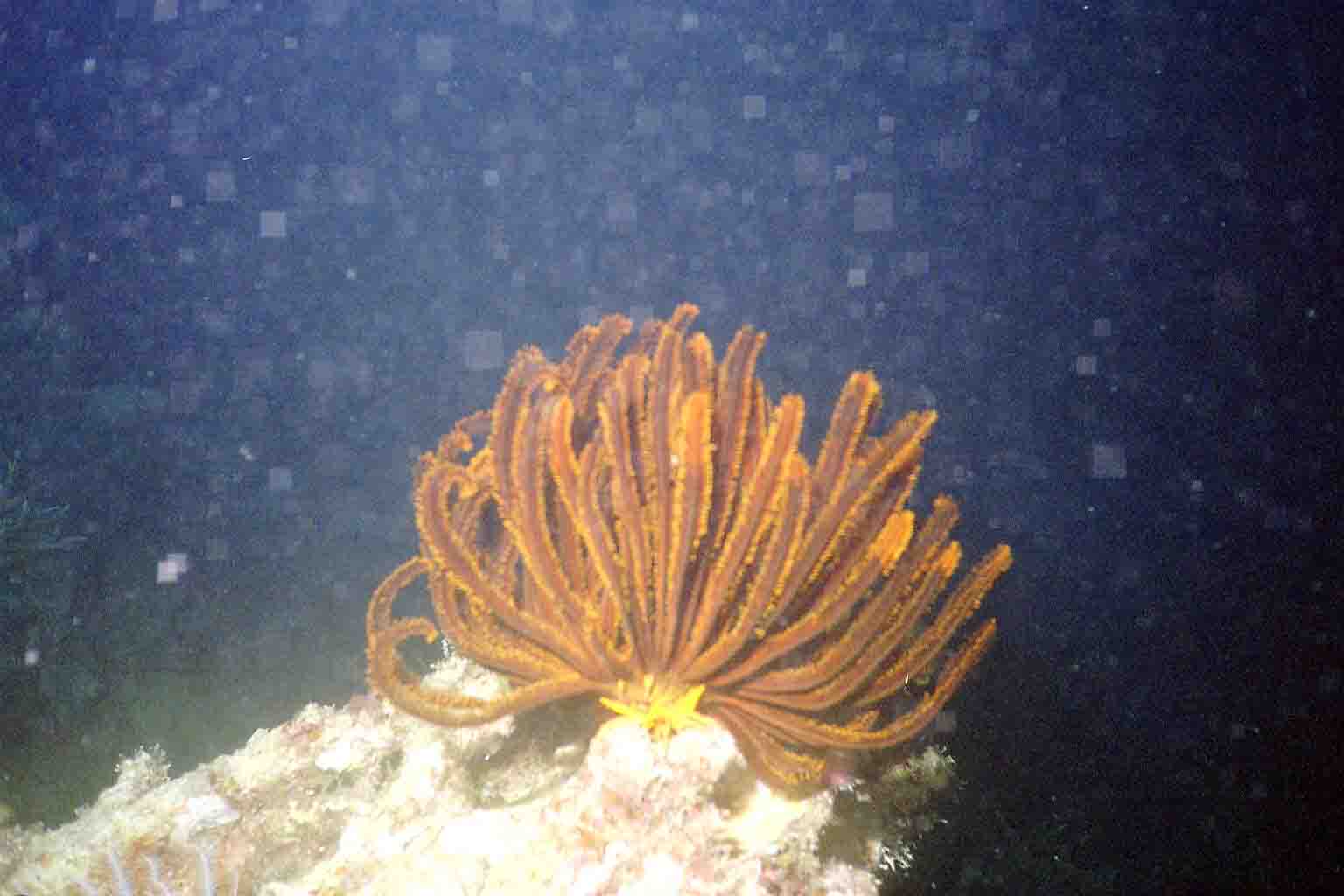
Some Soft Coral
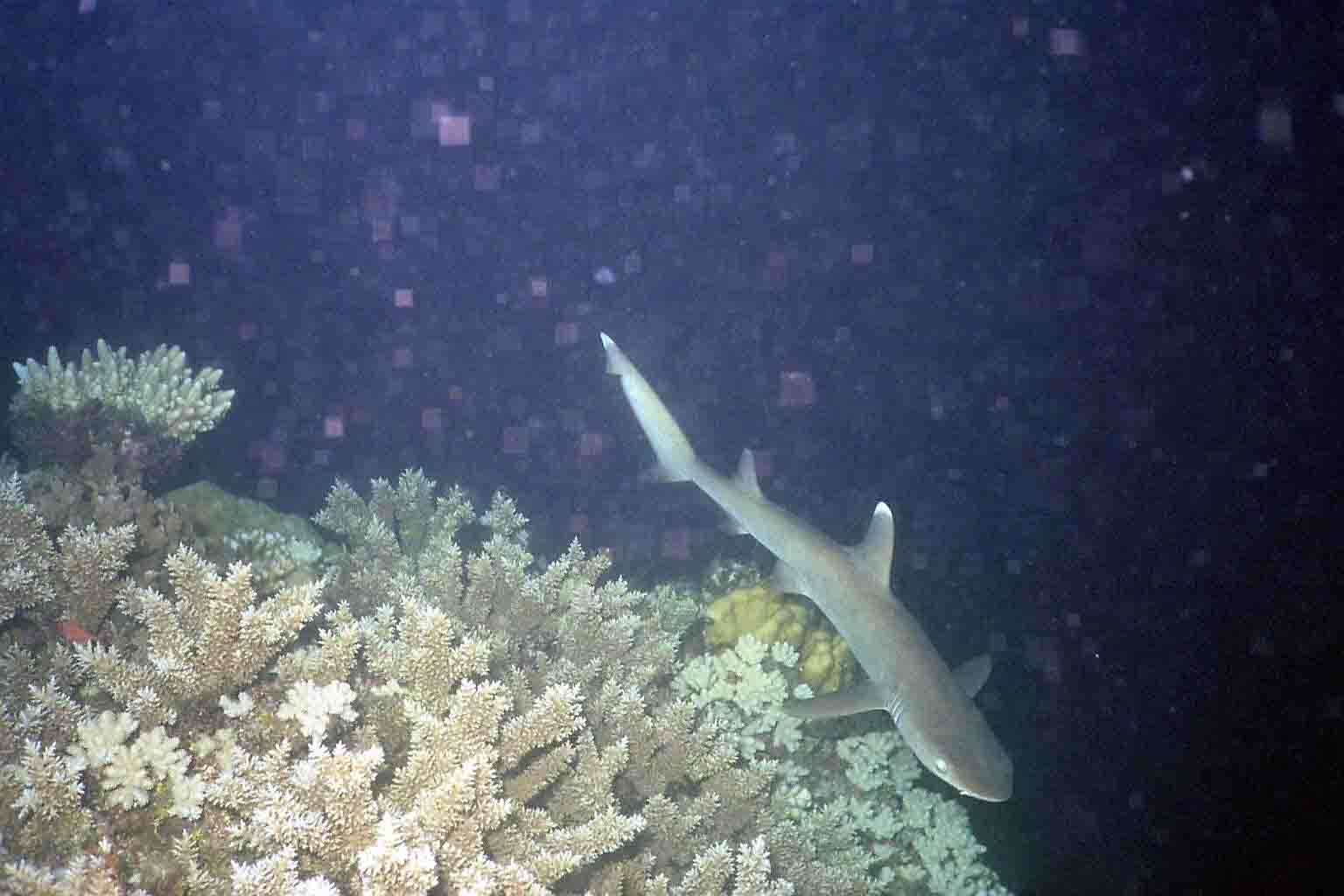
A Small Whitetipped Reef Shark
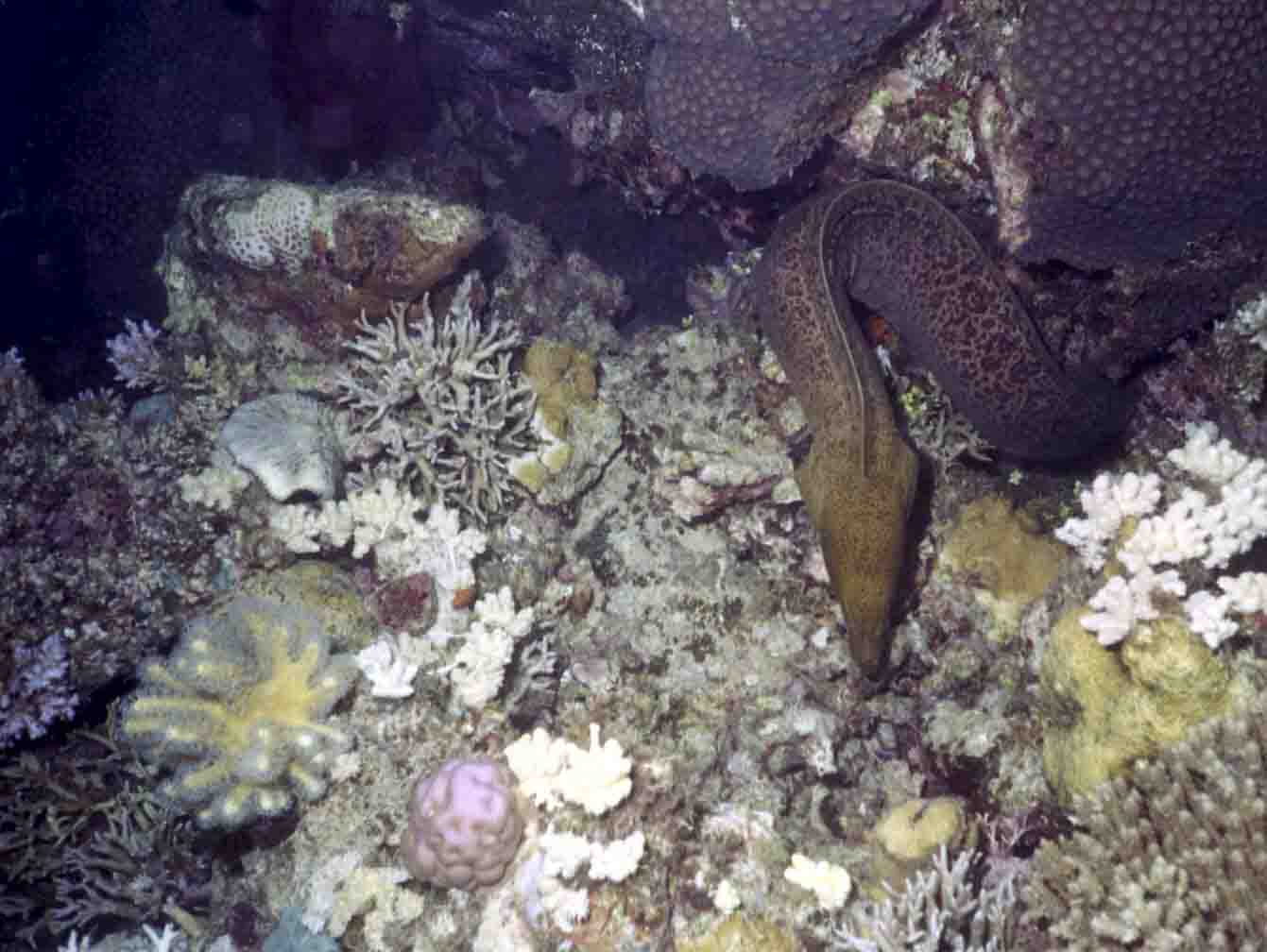
A Moray Eel
For dessert, we had a lovely angel cake with fresh fruit on it. It was delicious and I have no idea how Jenny whips out these glorious concoctions in that little kitchen! I suppose this means that I can't use the "too-small-kitchen" excuse for why I don't cook in NYC.
Yum.